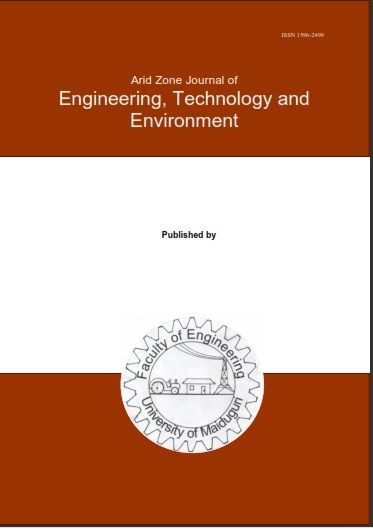Abstract
Concrete, due to its versatility and ready availability, continues to be of great importance around the world, and with the increasing need for shelter, the force pulled by construction activity brought about the high demand for construction materials and a devastating effect on the environment due to the activities from the raw materials needed in the production of cement and concrete. This research investigates the effect of metakaolin as a partial replacement of cement for concrete production. Cement was partially replaced by metakaolin at 5%, 10%, 15%, 20%, 25% and 30%. A constant water/binder ratio of 0.50 was used. The parameters investigated include the chemical composition of metakaolin, setting time, workability, density, compressive strength, split tensile strength, and flexural strength. The results showed that metakaolin is a good pozzolan with combined SiO2, Al2O3 and Fe2O3 to equal 92.89%. The results from the test show that the inclusion of metakaolin increased the setting time of cement metakaolin paste and resulted in the workability reduction of concrete as partial cement replacement with metakaolin increases. This research reveals that partial cement replacement with 0% and 10% MTK in concrete both gave an average compressive strength of 28.9 N/mm2, at 28 days. Meanwhile, the highest value for compressive strength obtained at 90 days is 34.8 N/mm2, which was at 10% replacement with MTK. The result shows that metakaolin (MTK) has a pozzolanic effect, considering the strength activity index and improved compressive strength, split tensile strength and flexural strength of concrete. The optimum cement replacement was 10% metakaolin, which performed better than the control concrete. At later stages of curing, 15% also shows promising results. When metakaolin is calcined, it is expected to undergo pozzolanic reactions with cement hydrates, forming secondary Calcium Silicate Hydrate (C–S–H), which aids strength development. It can be concluded that metakaolin is a suitable material for partial replacement of cement up to 10%. Thus, using MTK as a partial replacement for cement in concrete at a lower replacement volume will reduce cement usage, production costs, and environmental pollution from cement production.

This work is licensed under a Creative Commons Attribution-NonCommercial-NoDerivatives 4.0 International License.
Copyright (c) 2025 ARID ZONE JOURNAL OF ENGINEERING, TECHNOLOGY AND ENVIRONMENT

